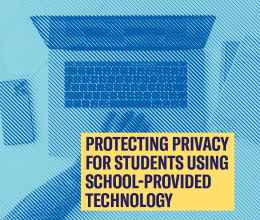
The City of Chicago’s far-reaching surveillance camera system continues to expand and remains largely opaque 10 years after the release of a report first expressing alarm about cameras in the City. In February 2011, the ACLU of Illinois first issued Chicago’s Video Surveillance Cameras: A Pervasive and Unregulated Threat to Our Privacy. At the time of the report, the City’s surveillance camera system linked together around 10,000 private and public cameras. Today, the number of cameras in the system exceeds, by some estimates, more than 30,000.
Although the number of cameras has expanded, the system continues to operate without any regulation or privacy or regular public reporting about the camera system. To date, the Chicago City Council has never held a single hearing – let alone adopted an ordinance – to protect personal privacy in Chicago.
The ACLU report asked the City to institute a moratorium on the deployment of any further cameras until a comprehensive review of the entire system, its reach, its costs and its impact on privacy could be conducted.
“Even ten years on, it is not too late for the City of Chicago to act,” said Edwin C. Yohnka, Director of Communications and Public Policy at the ACLU of Illinois. “After a decade of rampant expansion of surveillance camera systems, we need a moratorium to allow time for appropriate privacy regulations with regular reporting to be put in place.”
“Other cities – from the District of Columbia to Pittsburgh – have adopted regulations and privacy protections; Chicago can do it as well.”
The ACLU’s call for a moratorium were based on the lack of any meaningful limits to protect privacy in this powerful and expanding camera system. The cameras to “pan-tilt-zoom” in order to allow police and other officials to use the cameras to track people from camera to camera and look inside cars and homes in some locations across the City and enables facial recognition technology and automatic tracking. There is no public audit regarding the use and effectiveness of the camera system.
Chicago’s camera system is multi-faceted across the entire stretch of the City. In addition to thousands of surveillance cameras under the control of the Chicago Police Department, cameras from the CTA and parks system, as well as cameras from private businesses and residences in a wide range of neighborhoods. All of these cameras can be accessed in a command center of the Office of Emergency Management and Communications. The breadth of the surveillance is astounding. For example, it has been estimated that if a person walks north on Michigan Avenue from Roosevelt Road to Oak Street, their image would be shown on a camera viewable within the OEMC for the entire duration of the walk.
The privacy concerns first raised by the ACLU report were confirmed four years ago by the findings of an investigation conducted by the Office of Inspector General. The report demonstrated that OEMC could not guarantee that only those with authorization to use and manipulate these powerful and ubiquitous cameras had access to the system.
“The City long has claimed that they have privacy guidelines to govern the cameras,” added Yohnka. “But as the OIG report demonstrated, the City cannot show that only authorized personnel are using the cameras and who, if anyone, has ever been disciplined for violating those guidelines.”
“Secret privacy policies are no policies at all.”






